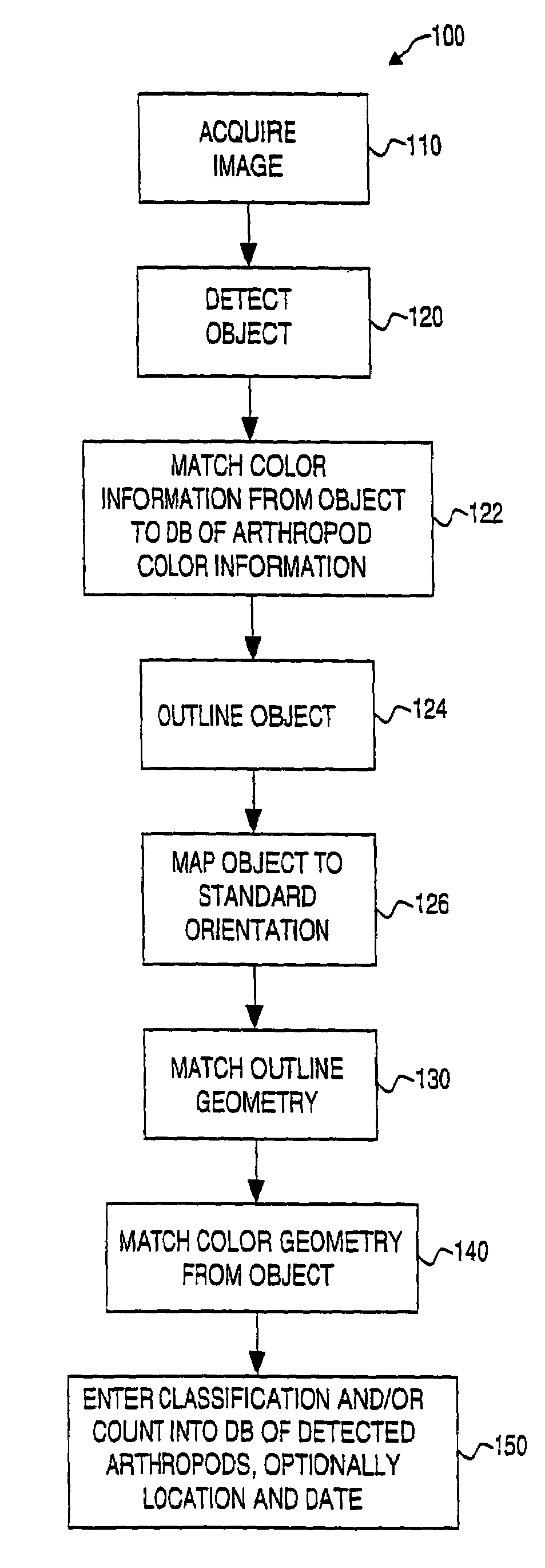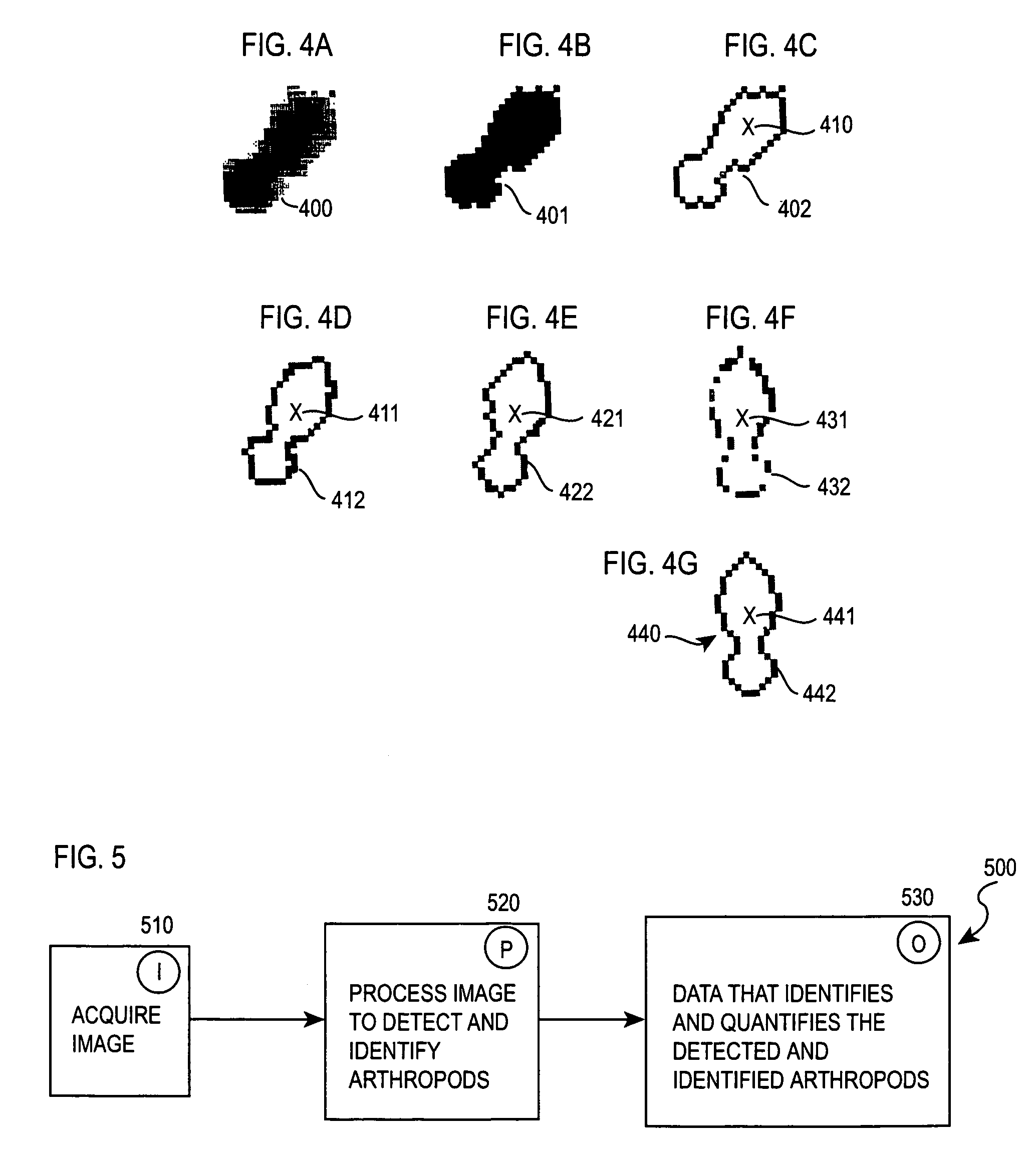Method and system for detecting and classifying objects in images, such as insects and other arthropods
a machine vision and object detection technology, applied in the field of automatic machine vision recognition, can solve the problems of transferring pathogens among people and other animals, significant damage and loss of plants, wood and fiber, etc., and achieve the effect of improving taxonomic capabilities
- Summary
- Abstract
- Description
- Claims
- Application Information
AI Technical Summary
Benefits of technology
Problems solved by technology
Method used
Image
Examples
experiment 3
[0345 demonstrated an alternative approach to collecting and processing images of insects and arthropods. Rather than obtaining insect images by placing them on the surface of a scanner, a digital color camera is placed near and with a view of the arthropod-collecting or -detection surface. The portability and small size of a camera as opposed to a computer scanner is appropriate for field conditions, especially as part of automatic sampling devices. A digital camera is also preferred for the hardware portion of the system when magnification via a lens is needed. Experiment 3 shows that a camera-based system can automatically detect, classify and count insects that have been caught on or in traps in the field, or after being collected have been placed on another type of detection surface.
experiment 1
[0346] Equipment Setup. See FIG. 6.
[0347]1.—An Epson Perfection 1200U scanner communicated with a Macintosh Power Mac G4 (Mac OS X Version 1.5 operating system) via a Universal Serial Bus (USB) connection. The scanner used the TWAIN 5 software. This software allows the user to collect images and adjust image quality. The TWAIN software initially shows a preview image of the entire scanning surface. A portion or subwindow was then selected that included all of the insects / arthropods, before the final full-resolution image was requested. The resulting images were saved to a bitmap format file for further processing. The scanner has an imaging surface that is 21.6 by 27.9 centimeters in area (8½ by 11 inches) and can collect images of resolutions ranging from 50 to 9,600 dpi. The scanner can save the color as 24 or 48 bit information. A spatial resolution of 96 dpi and 24-bit color were used. To avoid crushing the insects on the scanner's glass surface with the scanner's cover or lid, ...
experiment 2a
[0397]
[0398]This experiment builds upon what was done in Experiment 1 and was performed to prove that the nearest-neighbor classifier is able to distinguish between the insects it has been trained to recognize and various forms of clutter that could be present in some applications. For example, if the user placed insects along with plant parts on the scanning surface. This could happen if an embodiment of the system is used by a person who is sampling insects on vegetation with a sweep net. The sampler sweeps the net over vegetation that may harbor insects, transfers the collected material that includes insects and plant parts to a device to kill the insects and then places the collected material on the scanning surface of the system. In addition, it was shown that the feature set and 1NN classifier are robust, since they can often identify incomplete arthropods, i.e., insects or arthropods with parts of their body missing from the damage caused by handling them after some of them h...
PUM
 Login to View More
Login to View More Abstract
Description
Claims
Application Information
 Login to View More
Login to View More - R&D
- Intellectual Property
- Life Sciences
- Materials
- Tech Scout
- Unparalleled Data Quality
- Higher Quality Content
- 60% Fewer Hallucinations
Browse by: Latest US Patents, China's latest patents, Technical Efficacy Thesaurus, Application Domain, Technology Topic, Popular Technical Reports.
© 2025 PatSnap. All rights reserved.Legal|Privacy policy|Modern Slavery Act Transparency Statement|Sitemap|About US| Contact US: help@patsnap.com



